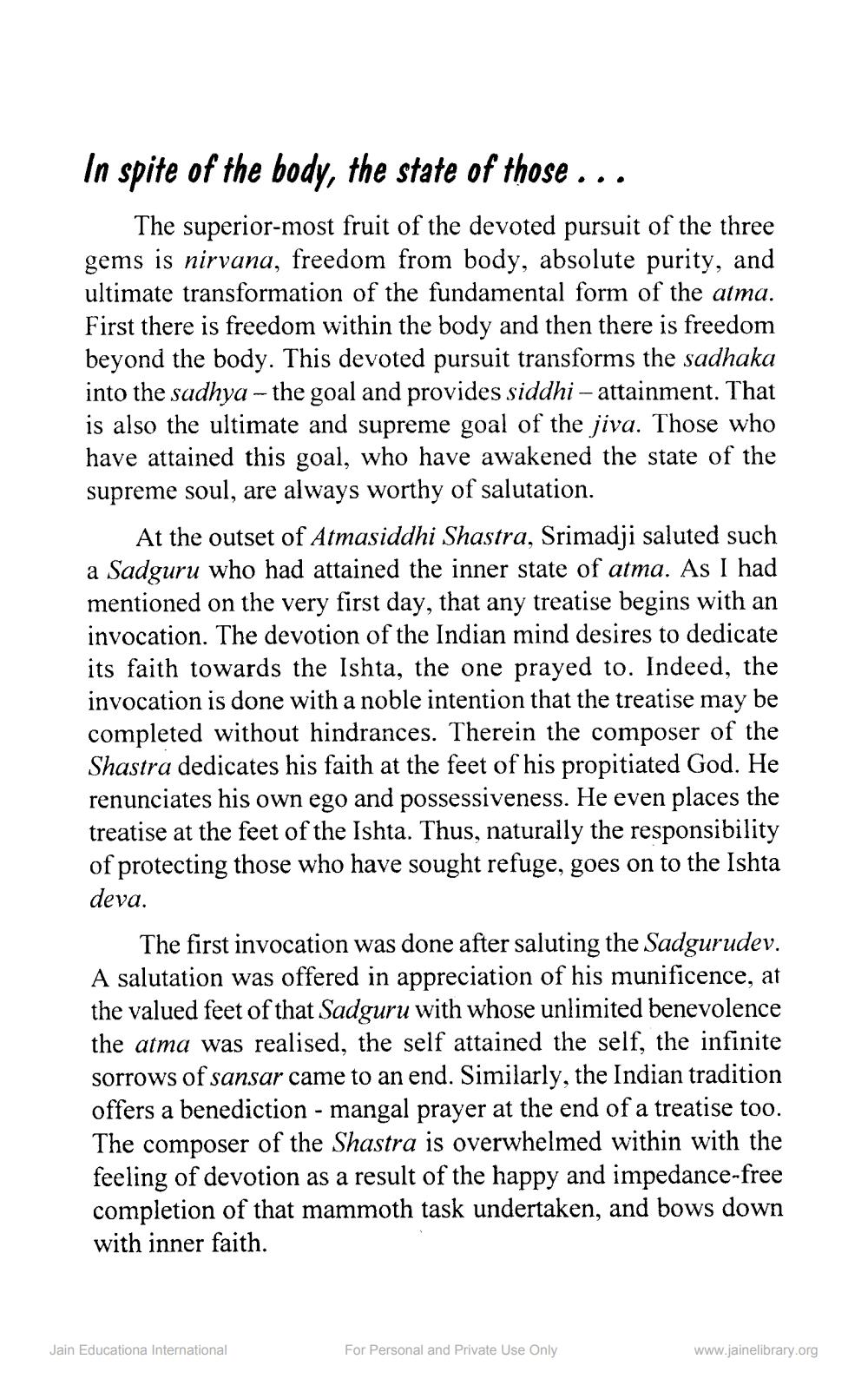________________
In spite of the body, the state of those ...
The superior-most fruit of the devoted pursuit of the three gems is nirvana, freedom from body, absolute purity, and ultimate transformation of the fundamental form of the atma. First there is freedom within the body and then there is freedom beyond the body. This devoted pursuit transforms the sadhaka into the sadhya - the goal and provides siddhi – attainment. That is also the ultimate and supreme goal of the jiva. Those who have attained this goal, who have awakened the state of the supreme soul, are always worthy of salutation.
At the outset of Atmasiddhi Shastra, Srimadji saluted such a Sadguru who had attained the inner state of atma. As I had mentioned on the very first day, that any treatise begins with an invocation. The devotion of the Indian mind desires to dedicate its faith towards the Ishta, the one prayed to. Indeed, the invocation is done with a noble intention that the treatise may be completed without hindrances. Therein the composer of the Shastra dedicates his faith at the feet of his propitiated God. He renunciates his own ego and possessiveness. He even places the treatise at the feet of the Ishta. Thus, naturally the responsibility of protecting those who have sought refuge, goes on to the Ishta deva.
The first invocation was done after saluting the Sadgurudev. A salutation was offered in appreciation of his munificence, at the valued feet of that Sadguru with whose unlimited benevolence the atma was realised, the self attained the self, the infinite sorrows of sansar came to an end. Similarly, the Indian tradition offers a benediction - mangal prayer at the end of a treatise too. The composer of the Shastra is overwhelmed within with the feeling of devotion as a result of the happy and impedance-free completion of that mammoth task undertaken, and bows down with inner faith.
Jain Educationa International
For Personal and Private Use Only
www.jainelibrary.org




